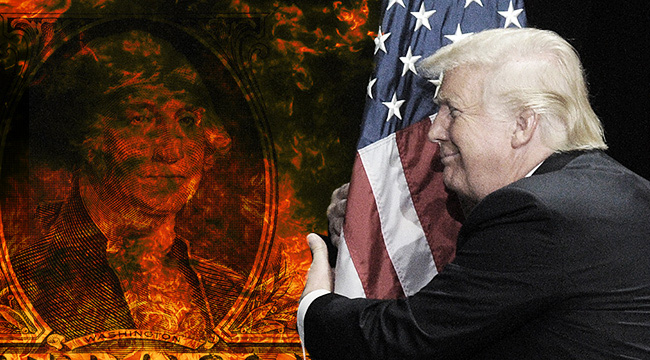
Amid all the scandal surround the Trump administration, it’s easy to forget the government still has to keep running, which means passing a budget. Trump’s budget, which has been the subject of months of speculation, has finally arrived. Like any budget, it’s got fans and detractors across the political spectrum. But there are some features of the budget that are raising alarm well beyond partisan politics.
First, it needs to be remembered that Presidents don’t set budgets, and indeed Presidents never pass budgets in the first place. Congress controls appropriations, and it never rubber-stamps a President’s budget. A good example is Medicaid: Trump has insisted it should be cut, and the House agrees, but the Senate has no interest in implementing such cuts. Similarly, Trump can threaten programs like PBS all he wants, but history tells us there’s a gap between threat and action. Trump is most likely to get cuts in areas where GOP politicians will feel little impact, but that’s a surprisingly short list. Even seeming slam-dunks like cutting the EPA turns out to have unearthed Republican opposition.
That said, Trump’s budget has been heavily criticized for cutting social programs and for granting states unusual leeway in how they apply others. In total, Trump wants $3.6 trillion in cuts. For example, states would be allowed to implement harsher restrictions on welfare programs, university science programs would be gutted, and other unpopular decisions are littered throughout.
The Trump administration’s response to this has generally been to plead for “compassion” for taxpayers funding this, or to argue that aspects of the budget will pay for themselves. Trump’s enormous tax cuts for the wealthy, for example, are supposed to stimulate growth of the gross domestic product, or GDP, at 3% a year. In this way, Trump’s beliefs on budgets and taxes are similar to Ronald Reagan’s, but Reagan’s cuts were engineered for 1980, not 2017, and even back then, they didn’t do what Trump wants to do. In fact, Bruce Bartlett, a staunch Republican who wrote the law that would underpin Reagan’s tax cut, points out in a 2012 editorial that the cuts didn’t goose GDP:
Republicans like to say that massive growth followed the Reagan tax cut. But average real GDP growth during Reagan’s eight years in the White House was only slightly above the rate of the previous eight years: 3.4 percent per year vs. 2.9 percent. The average unemployment rate was actually higher under Reagan than it was during the previous eight years: 7.5 percent vs. 6.6 percent.
As a result, Trump’s claims about the economy have been dismissed as excessively optimistic, at best. Before the budget was released, the White House ran Trump’s tax claims by 37 economists: 35 disagreed immediately, and two misread the question. Trump’s assumptions about the economy were questioned by economists across the political spectrum. And now that the budget has been released, there are a host of problems with it that the administration is failing to address.
The most glaring problem is that the budget literally counts the same money twice. It insists that cutting taxes will cause enough growth, according to the budget, to make the proposal deficit neutral, in Trump’s tax plan. But then it’s also supposed to supply enough growth, in Trump’s budget, to balance the budget. If that weren’t enough, there’s never been any economic evidence that tax cuts pay for themselves. Oddly, Trump’s budget completely omits the $5.5 trillion loss in revenue his tax cuts have been estimated to put on the budget. And that’s just the most visible flaw.
Another is Trump’s insistence on 3% growth a year, every year, for a solid decade. Economic growth depends on getting more people into the workforce and increasing their productivity, and neither is likely to suddenly skyrocket in the next decade. It’s fair to argue that unforeseen technological advancements or sudden industrial growth might cause this, but government budgets can’t deal in “maybes” if they hope to be balanced. Furthermore, a decade without a recession isn’t just optimistic, that has exactly once in American economic history, from March 1991 to March 2001.
It’s true that a budget reflects a President’s priorities, but on some level, it also reflects a President’s grasp of economic reality. And it’s very clear that the Trump administration desperately needs a reality check.
